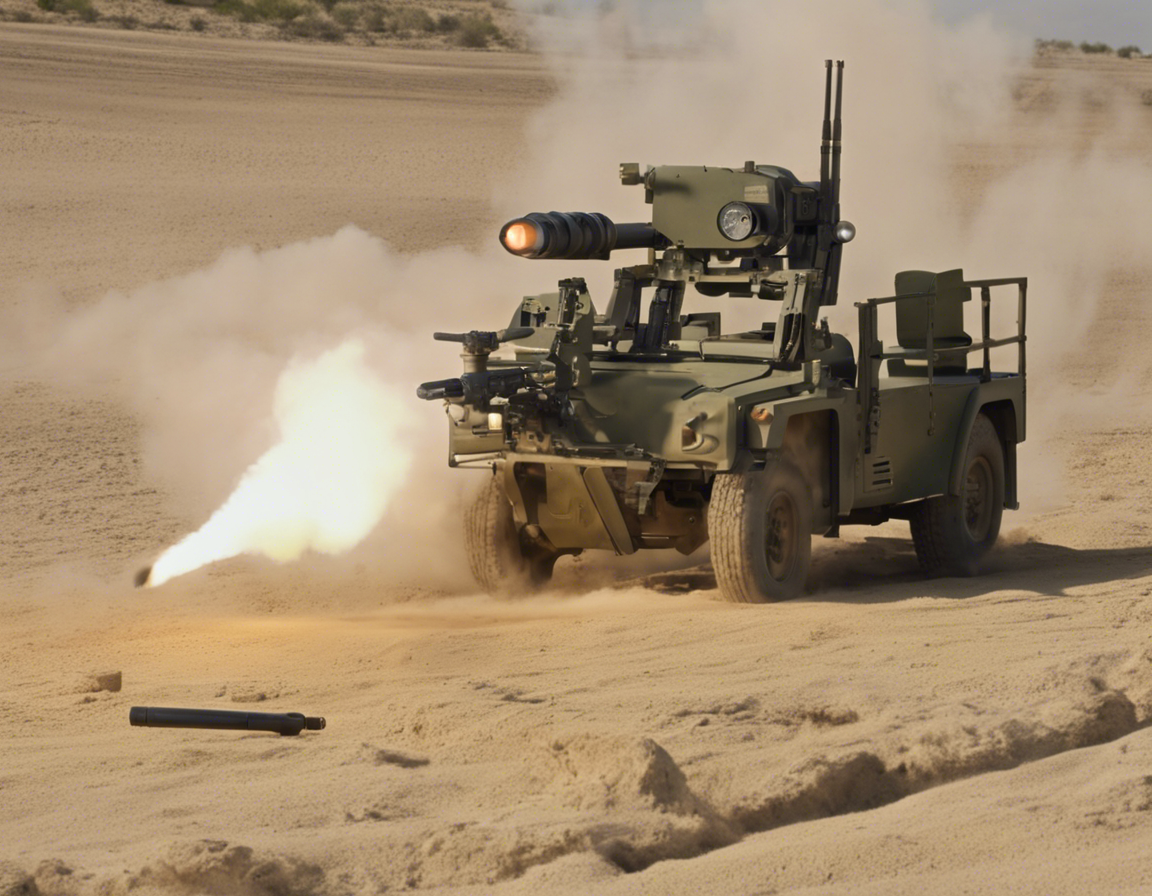
Machine Gun Bullet: Mass, Speed, and Impact Analysis
When it comes to military weaponry, one of the most iconic and formidable tools is the machine gun. Known for its rapid rate of fire and devastating impact on the battlefield, the machine gun plays a crucial role in modern warfare. In this article, we will delve into the mass, speed, and impact of machine gun bullets, exploring their characteristics and the effects they have on their targets.
Understanding Machine Gun Bullets
Machine gun bullets, also known as rounds or cartridges, are projectiles that are fired from a machine gun. These bullets are typically made of a metal casing, a propellant for propulsion, and a projectile at the tip. The most common caliber for machine guns is the 7.62mm round, although there are variations in sizes and calibers depending on the specific type of machine gun.
Mass of Machine Gun Bullets
The mass of a machine gun bullet varies depending on the caliber and type of ammunition being used. However, a typical 7.62mm round for a machine gun has a mass of approximately 9-10 grams. This may seem relatively small, but when fired at a high velocity, even a single bullet can cause significant damage to its target.
Speed of Machine Gun Bullets
One of the defining characteristics of machine gun bullets is their high speed. When fired from a machine gun, these bullets can travel at velocities exceeding 800 meters per second. This rapid speed allows the bullets to reach their target quickly, making them deadly and difficult to evade.
Impact of Machine Gun Bullets
The impact of a machine gun bullet is determined by its mass, speed, and the type of target it hits. When a machine gun bullet strikes a human body, for example, it can cause severe tissue damage, organ disruption, and potentially fatal injuries. In military applications, machine gun bullets are designed to incapacitate or kill enemy combatants effectively.
Penetration and Terminal Ballistics
Machine gun bullets are designed not only to strike a target but also to penetrate through various obstacles and materials. The concept of terminal ballistics refers to how a bullet behaves upon impact with a target. Machine gun bullets are engineered to maximize their kinetic energy and transfer as much force as possible to the target, ensuring maximum effectiveness.
Factors Affecting Bullet Performance
Several factors can influence the performance of machine gun bullets, including bullet design, barrel length, muzzle velocity, and firing distance. Bullets with different designs, such as full metal jacket or hollow point, will have varying impacts on their targets. Additionally, the length of the barrel and the initial velocity of the bullet can affect its trajectory and accuracy.
Machine Gun Calibers and Effectiveness
Different machine guns are chambered for various calibers of ammunition, each with its own level of effectiveness. Larger calibers, such as the .50 BMG, are capable of penetrating armored vehicles and fortified structures, making them ideal for anti-material roles. Smaller calibers, like the 5.56mm NATO, are more commonly used for infantry rifles due to their lighter weight and controllability.
Training and Usage Considerations
Using a machine gun effectively requires specialized training and understanding of its capabilities. Soldiers must be trained in proper firing techniques, safe handling procedures, and maintenance to ensure the weapon functions correctly in combat situations. Additionally, ammo management is crucial, as machine gun belts can be heavy and cumbersome to carry in the field.
Common Machine Gun Platforms
There are several iconic machine gun platforms that have been used by armed forces around the world. These include the M249 SAW, M240, PKM, MG42, and Browning M2. Each of these machine guns has its own unique characteristics, such as rate of fire, caliber, and reliability, making them suitable for various combat roles.
Machine Gun Bullet FAQs
1. What is the effective range of a machine gun bullet?
Machine gun bullets can have effective ranges varying from several hundred meters to over a kilometer, depending on the caliber and type of ammunition used.
2. How fast do machine gun bullets travel?
Machine gun bullets can travel at speeds exceeding 800 meters per second, depending on the specific ammunition and weapon system.
3. Can machine gun bullets penetrate body armor?
Some machine gun bullets, especially those of larger calibers, are capable of penetrating body armor used by military personnel.
4. Are machine gun bullets designed to cause maximum damage?
Machine gun bullets are designed to transfer the maximum amount of kinetic energy to the target, causing significant tissue damage and trauma.
5. How many rounds can a typical machine gun belt hold?
A typical machine gun belt can hold anywhere from 50 to several hundred rounds, depending on the specific weapon system and ammunition type.
In conclusion, machine gun bullets are powerful projectiles that play a critical role in modern warfare. Their mass, speed, and impact make them formidable weapons on the battlefield, capable of inflicting significant damage on enemy targets. Understanding the characteristics and capabilities of machine gun bullets is essential for military personnel tasked with utilizing these weapons effectively in combat scenarios.


